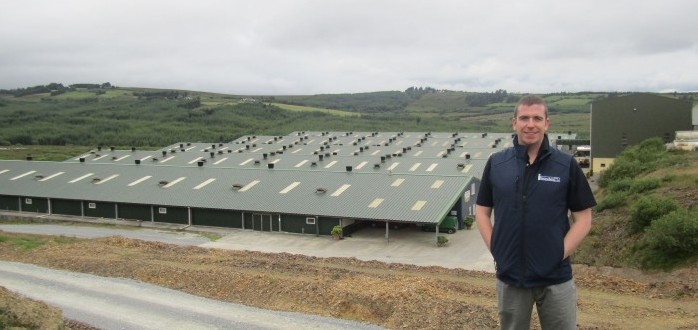In the latest issue of Pig World, Shane McAuliffe explains how 2022 was as difficult for Irish producers as it was for their UK counterparts and hopes for better times in 2023.
2022 can only be described for Irish pig farmers as ‘Annus horribilis’. In my article back in February I mentioned how the industry was on the brink of collapse as farmers fell into a deeper spiral of debt.
Throughout the year, that debt really just kept spiralling. Back at the beginning of the year, the cost of production was sitting at €1.85/kg with a pig price of around €1.40. In February, after a national meeting with pig farmers, the Minister for Agriculture, Food and the Marine, Charlie McConalogue announced a €7 million emergency payment for pig farmers. A payment of €20,000 per farmer would only cover two weeks losses on an average 600-sow unit.
By early March, as war erupted in Ukraine, pig feed prices catapulted to unimaginable levels. The pig price remained stagnant for many weeks. A welcome 20c/kg increase came in mid-April but that did little to cover the unsustainable incurred losses.
Farmer protests at secondary processors kept the crisis in the media but it was not until the end of June before pig prices finally hit €2/kg. By then though, the cost of production had risen to €2.20/kg, and the Government realised that the original €20,000 payment really was a drop in the ocean, and they announced the second round of the Pig Exceptional Payment Scheme.
Farmers applying for this would receive €100,000. However this came at a cost, in terms of a 10% reduction in your herd. It also refused to accept applications from farmers with more than one herd, even if the herds were completely separate entities and registered companies. This combined cash injection of €20m to pig farmers is very much welcome, of course, but we must remember the Irish pig sector is worth €1.5 billion to our national economy.
At the moment, the pig price is between €2.06 and €2.16/kg. With the cost of production still at €2.20/kg, farmers are still making losses, but thankfully it is nowhere as bad as it was back in the late spring/early summer.
The contraction of the EU breeding herd and the increase in EU pigmeat demand has seen an upward movement in pig prices across the continent, but we are lagging behind here and there was a much-needed boost before Christmas.
In value terms, our pigmeat exports are expected to reach another record high for 2022. Production increased by 5% in the first 6 months of the year, but we also see an 8% increase in sow numbers going to slaughter in the first 9 months – showing the reduction of sows at farm level.
In terms of production, the Teagasc figures for the National Pig Herd Performance Report show that the average Irish sow has 14.6 born alive per litter and 28.1 pigs produced per year.
Pig HealthCheck
Our Animal Health Ireland led Pig HealthCheck programme is progressing well but salmonella serology scores and an ante-mortem data dashboard appearing online when producers log into their account. We can now benchmark each batch of pigs we send to slaughter as well as looking at national averages. The BioCheck biosecurity assessment is now compulsory and data has shown that farms increase their scores by 3% at their next assessment.
In May, I was very honoured to pick up an award for Sustainable Agriculture at the prestigious RDS (Royal Dublin Society) Awards in Dublin. It was not only a win for me and our team, but for all pig farmers, as for a pig farm to be recognised at such a high level is a huge win for our industry.
In September I accepted a new role off farm, as a Lecturer at the Department of Biological and Pharmaceutical Sciences at Munster Technological University.
For my first semester, I was lecturing to second, third and fourth year Agricultural Science students. Most are from dairy backgrounds, so with two of my modules being Genetics and Biotechnology, and Applied Precision Farming, it is a fantastic opportunity to give students a greater understanding of how advanced the pig industry is in these areas, and if I inspire just one student to work in pigs after they graduate it is worth the effort!
Shane McAuliffe’s family produces 50,000 pigs per year for the Truly Irish brand. He is secretary of the Irish Pig Health Society, secretary of the Irish branch of the European Pig Producers and sits on the Irish Farmers’ Association’s National Animal Health Committee. He is also a lecturer at Munster Technological University.You can follow Shane on Twitter: @ShaneMcAuliffe1




